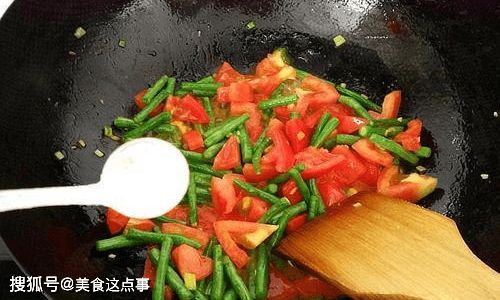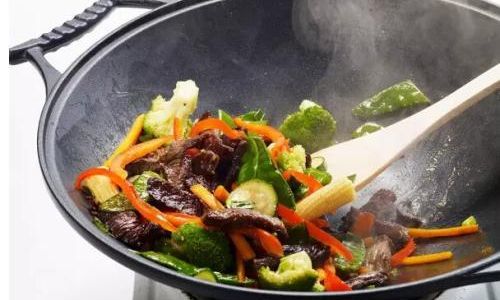Stir-frying, a cornerstone of Asian cuisine, has captivated home cooks and professional chefs alike with its speed, versatility, and ability to retain the vibrant flavors and nutrients of ingredients. At its core, stir-frying is a cooking technique that involves quickly sautéing ingredients in a small amount of oil over high heat, often in a wok or a large skillet. The magic lies not just in the method but also in the thoughtful selection of ingredients. A well-executed stir-fry balances textures, colors, and tastes—crisp vegetables, tender proteins, and aromatic seasonings melding into a harmonious dish. This article explores the best ingredients to include in your stir-fries, offering insights into how each component contributes to the final result and how to combine them for culinary success.

Proteins: The Foundation of a Satisfying Stir-Fry
Proteins form the heart of many stir-fry dishes, providing substance and satiety. The key to a great stir-fry protein is choosing cuts or varieties that cook quickly without becoming tough. Here are some top options:
-
Chicken: Boneless, skinless chicken breast or thighs are classic choices. Thigh meat, with its higher fat content, remains moist and flavorful even when cooked rapidly, while breast meat benefits from a quick marinade to prevent dryness. Slice chicken into thin, uniform strips for even cooking.
-
Beef: Flank steak, sirloin, or skirt steak are ideal for stir-fries due to their tenderness and rich flavor. Slicing the meat against the grain ensures tenderness. For a budget-friendly twist, try ground beef or beef strips marinated in soy sauce and cornstarch.
-
Shrimp: Large or jumbo shrimp cook in minutes, making them a perfect seafood addition. Peel and devein them beforehand, and pat dry to prevent steaming.
-
Tofu: Firm or extra-firm tofu absorbs flavors beautifully and adds a plant-based protein boost. Press it to remove excess moisture before cutting into cubes or strips. For extra crispiness, coat tofu in cornstarch before frying.
-
Eggs: Whisked eggs scrambled into stir-fries add creaminess and texture. They pair exceptionally well with vegetables like spinach or tomatoes.
Pro Tip: Marinate proteins briefly in a mixture of soy sauce, rice wine, and cornstarch to tenderize and infuse flavor before cooking.
Vegetables: Crunchy, Colorful, and Nutrient-Rich
Vegetables are the soul of a stir-fry, offering freshness, texture, and a spectrum of vitamins. The goal is to retain their crispness while cooking them evenly. Consider these staples:
-
Cruciferous Vegetables: Broccoli, cauliflower, and bok choy hold up well under high heat. Blanch broccoli briefly before stir-frying to ensure it cooks through without burning.
-
Bell Peppers: Red, green, or yellow bell peppers add sweetness and vibrant color. Slice them into thin strips for quick cooking.
-
Carrots and Snap Peas: Julienned carrots and snap peas contribute a satisfying crunch. Add them early in the cooking process to soften slightly.
-
Mushrooms: Shiitake, oyster, or button mushrooms bring earthy umami. Sauté them until golden to release their depth of flavor.
-
Leafy Greens: Spinach, kale, or Chinese greens like gai lan wilt quickly and add a delicate bitterness. Add them toward the end of cooking.
-
Aromatic Vegetables: Garlic, ginger, and onions form the flavor base. Mince or grate them finely to release their oils and aromatics.
Balance is Key: Combine vegetables with varying cooking times. Start with denser veggies like carrots, then add quicker-cooking ones like peppers and greens.
Aromatics and Seasonings: Elevating Flavor Profiles
Aromatics and seasonings are the secret weapons of stir-fry mastery. They build complexity and depth, transforming simple ingredients into a memorable meal.
-
Garlic and Ginger: Fresh garlic and ginger are non-negotiable. Use them generously—minced, grated, or sliced—to create an aromatic foundation.
-
Chilies: Fresh red or green chilies (or chili flakes) add heat. Adjust the quantity based on your spice tolerance.
-
Scallions: Both the white and green parts are useful. Sauté the white parts with aromatics and use the green parts as a garnish.
-
Cilantro and Basil: Fresh herbs like cilantro or Thai basil add a bright, herbal finish. Toss them in at the end to preserve their freshness.

-
Sesame Seeds: Toasted sesame seeds or a drizzle of sesame oil impart a nutty richness. Use them sparingly, as their flavor is potent.
Sauces and Condiments: The Glue That Binds
Sauces are the soul of a stir-fry, tying ingredients together with a harmonious blend of salty, sweet, sour, and umami notes.
-
Soy Sauce: Light soy sauce adds saltiness, while dark soy sauce contributes color and depth. Tamari is a gluten-free alternative.
-
Oyster Sauce: A thick, briny sauce made from oysters, it adds unparalleled umami. Vegetarian oyster sauce substitutes are available.
-
Hoisin Sauce: Sweet and tangy, hoisin sauce works well in Chinese-inspired dishes like beef stir-fries.
-
Rice Vinegar: Balances richness with a subtle acidity. Use seasoned rice vinegar for a touch of sweetness.
-
Shaoxing Wine: This Chinese cooking wine enhances meat and seafood. Substitute with dry sherry if unavailable.
-
Cornstarch Slurry: A mixture of cornstarch and water thickens sauces, giving them a glossy finish. Add it toward the end of cooking.
Pro Tip: Combine sauces in advance to create a balanced marinade or stir-fry sauce. Taste and adjust seasonings before serving.
Optional Add-Ins: Texture and Visual Appeal
Elevate your stir-fry with these optional ingredients that add texture, color, and intrigue:
-
Nuts and Seeds: Cashews, peanuts, or sesame seeds provide crunch. Toast them lightly before adding.
-
Dried Fruits: Raisins or dried cranberries add bursts of sweetness. Rehydrate them briefly in warm water if they’re too chewy.
-
Edamame: Frozen shelled edamame cooks quickly and adds protein and vibrant green color.
-
Noodles or Rice: Turn your stir-fry into a one-pot meal by adding cooked noodles (udon, rice, or egg noodles) or rice. Toss gently to coat them in sauce.
Cooking Oils: Choosing the Right Base
The oil you use affects the flavor and smoke point of your stir-fry. Opt for oils with high smoke points to withstand high heat:
- Peanut Oil: Neutral flavor and high smoke point make it ideal for stir-fries.
- Vegetable Oil: A budget-friendly alternative with a neutral taste.
- Sesame Oil: Use toasted sesame oil in moderation for its nutty aroma, typically as a finishing touch.
Technique Tips for Perfect Stir-Fries
- Prep Ahead: Chop all ingredients before heating the pan. Stir-frying moves quickly, and overcrowding the pan leads to steaming instead of searing.
- High Heat: Preheat your wok or skillet until smoking hot. This sears ingredients, locking in flavor.
- Cook in Batches: If doubling the recipe, cook proteins and vegetables separately to avoid overcrowding, then combine at the end.
- Toss, Don’t Stir: Use a spatula or wok tool to toss ingredients gently, ensuring even cooking without bruising delicate vegetables.
Health Benefits of Stir-Frying
Stir-frying is not only delicious but also nutritious. The high-heat, quick-cooking method preserves vitamins and minerals in vegetables better than boiling or slow-cooking. Using minimal oil keeps dishes light, while the variety of vegetables ensures a fiber-rich meal. Opt for lean proteins or tofu to reduce saturated fat, and experiment with herbs and spices to minimize sodium.
Cultural Variations and Inspirations
Stir-frying is a technique embraced globally, with regional variations offering endless inspiration:
- Thai: Incorporate lemongrass, basil, and fish sauce for a zesty twist.
- Japanese: Use mirin, sake, and dashi for umami-packed dishes like yakisoba.
- Indian: Add turmeric, cumin, and mustard seeds to create a fragrant “bhuna” stir-fry.
- Mexican: Toss in chipotle peppers, corn, and black beans for a Southwestern flair.
Troubleshooting Common Issues
- Soggy Vegetables: Ensure your pan is hot enough, and avoid overloading it. Cook vegetables in batches if needed.
- Dry Protein: Overcooking is the culprit. Marinate proteins and cook them over high heat briefly.
- Bland Flavor: Layer flavors by using aromatics, sauces, and herbs. Taste and adjust seasonings before serving.
Conclusion: The Joy of Experimentation
The beauty of stir-frying lies in its flexibility. Once you master the basics, feel free to experiment with ingredients, seasonings, and techniques. A well-stocked pantry of proteins, vegetables, and sauces empowers you to create endless variations, from classic beef and broccoli to innovative tofu and mango stir-fries. Remember, the best stir-fry is one that delights your palate and nourishes your body. So grab your wok, crank up the heat, and let the sizzle begin!
Final Tip: Serve your stir-fry immediately to savor its vibrant textures and flavors. Pair it with steamed rice, quinoa, or noodles for a complete meal. Bon appétit!





0 comments